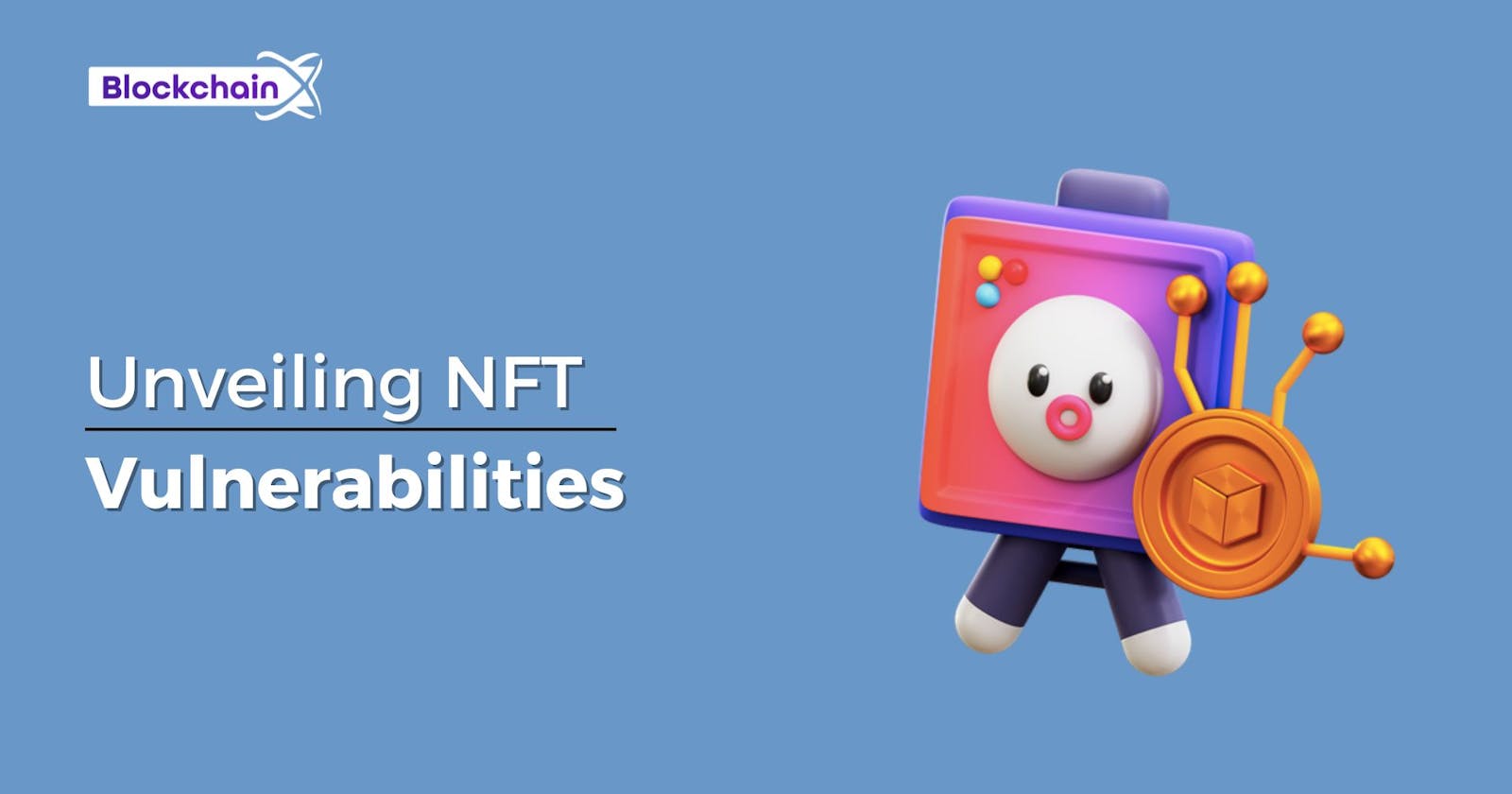Introduction:
Non-fungible tokens (NFTs) have gained tremendous popularity in recent years, revolutionizing the digital art and collectibles market. As NFTs continue to evolve and attract substantial investment, it is crucial to assess the vulnerabilities and security risks associated with this emerging technology. This article aims to provide a comprehensive analysis of NFT vulnerabilities, outlining potential security threats and exploring best practices for safeguarding NFT assets
NFT Basics and Blockchain Security :
To understand NFT vulnerabilities, it is essential to grasp the fundamentals of NFTs and the blockchain technology that underlies them. NFTs are unique digital assets represented on a blockchain, typically built on Ethereum's ERC-721 or ERC-1155 standards. The decentralized and immutable nature of blockchain technology provides a strong foundation for security; however, certain vulnerabilities can still pose risks to NFT owners.
Non-Fungible Tokens (NFTs):
Definition: NFTs are digital assets that represent ownership or proof of authenticity of a unique item or piece of content, such as artwork, collectibles, virtual real estate, or in-game items.
Unique Properties: Unlike fungible tokens like cryptocurrencies, each NFT has a distinct value and cannot be exchanged on a one-to-one basis. Each NFT possesses unique characteristics, making it different from any other token.
Blockchain Technology:
Decentralization: NFTs are typically built on blockchain platforms like Ethereum, which employ a decentralized network of computers (nodes) to verify and record transactions. This decentralization ensures that no single entity has control over the network, making it resistant to censorship and tampering.
Immutability: Once a transaction is recorded on the blockchain, it becomes nearly impossible to alter or delete. This immutability ensures that the ownership and transaction history of NFTs can be verified transparently, reducing the risk of fraudulent activities.
Smart Contracts: NFTs are often implemented using smart contracts, which are self-executing agreements with predefined rules encoded on the blockchain.
Security Considerations:
Private Key Management: NFT ownership is tied to cryptographic keys, with the private key acting as the proof of ownership. It is crucial to safeguard private keys from unauthorized access, as anyone with access to the private key can control and transfer the associated NFTs.
Smart Contract Auditing: Smart contracts powering NFTs should undergo rigorous security audits to identify vulnerabilities or flaws in the code. Vulnerabilities like reentrancy attacks or overflow/underflow bugs can be exploited by malicious actors, leading to potential loss or manipulation of NFTs.
Interoperability: NFTs can be bought, sold, and transferred across different platforms and marketplaces. Ensuring the interoperability of NFTs without compromising security requires adherence to standardized protocols and thorough validation of external contracts.
Centralized Points of Failure: While blockchain technology offers security benefits, centralized components, such as NFT marketplaces or custodial wallets, introduce potential vulnerabilities. Users should assess the security practices and reputation of platforms before storing or trading their NFTs.
Mitigating NFT Security Risks:
Hardware Wallets: Storing private keys offline using hardware wallets adds an extra layer of security, reducing the risk of unauthorized access and phishing attacks.
Two-Factor Authentication (2FA): Enabling 2FA provides an additional security measure to protect accounts and prevent unauthorized access.
Due Diligence: Conducting thorough research and due diligence on NFT projects, creators, and platforms before engaging in transactions can minimize the risk of falling victim to scams or counterfeit NFTs.
User Education: Educating NFT owners about potential risks, best security practices, and common attack vectors like phishing can empower them to make informed decisions and protect their assets.
Smart Contract Vulnerabilities :
Smart contracts, the self-executing code powering NFTs, can contain vulnerabilities that attackers can exploit. One prominent Nft vulnerability is the reentrancy attack, where malicious contracts repeatedly call back into a target contract, draining its resources. Another vulnerability is the overflow/underflow bug, which occurs when arithmetic operations exceed the maximum or minimum values of a data type. Developers must rigorously test and audit smart contracts to identify and mitigate these vulnerabilities.
Platform and Marketplace Risks :
NFT marketplaces and platforms can introduce their own set of vulnerabilities. Centralized platforms may be susceptible to hacking attempts, leading to the compromise of user data and NFT assets. Additionally, fraudulent listings, counterfeit NFTs, and misleading metadata can deceive buyers and undermine trust in the ecosystem. Enhanced security measures, such as multi-factor authentication and rigorous identity verification, can help mitigate these risks.
Phishing and Social Engineering Attacks :
Phishing attacks targeting NFT owners have become increasingly prevalent. Attackers employ deceptive tactics, such as fake websites and social engineering techniques, to trick users into revealing sensitive information or transferring their NFT assets. Educating users about these risks, promoting secure browsing habits, and implementing robust anti-phishing measures are crucial for protecting NFT holders.
Storage and Custodial Risks :
The security of NFTs also depends on the storage and custodial solutions adopted by users. Storing private keys and wallet credentials securely is paramount to prevent unauthorized access. Custodial platforms, while providing convenience, introduce a central point of failure and may be vulnerable to hacks. Encouraging users to adopt secure storage practices like hardware wallets and offline backups can significantly enhance the security of their NFT assets.
Future Considerations and Best Practices :
As the NFT ecosystem continues to evolve, it is vital to anticipate and address emerging vulnerabilities. Collaboration between blockchain developers, auditors, and security experts can help identify and patch vulnerabilities in smart contracts and platforms. Implementing standards for metadata verification and conducting due diligence on NFT creators can reduce the risk of counterfeit assets. Ongoing user education and awareness campaigns are instrumental in fostering a security-conscious NFT community.
Conclusion :
NFTs offer exciting opportunities for digital ownership and creativity; however, they are not immune to vulnerabilities and security risks. By understanding and addressing the various risks associated with NFTs, users can protect their valuable assets and contribute to the long-term sustainability of the NFT ecosystem. Adhering to best practices, leveraging secure storage solutions, and advocating for continuous security improvements will ensure a safer and more resilient NFT marketplace for all participants.
